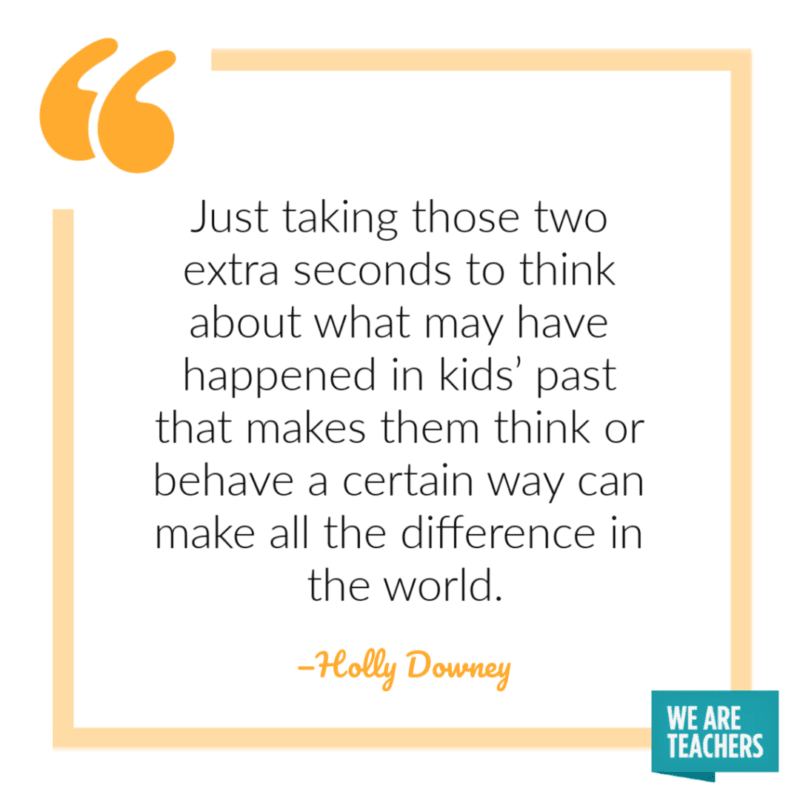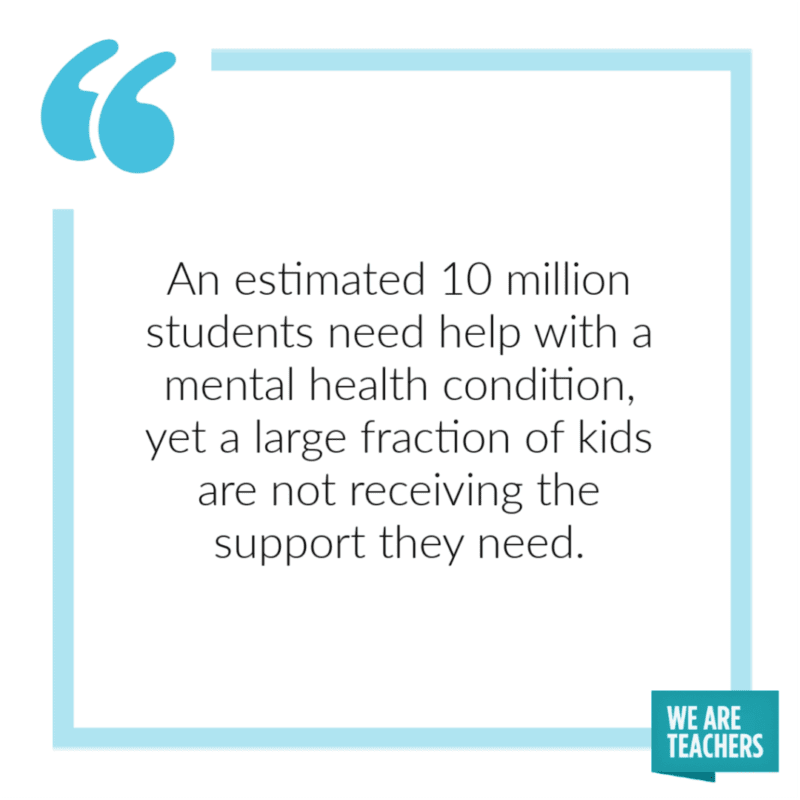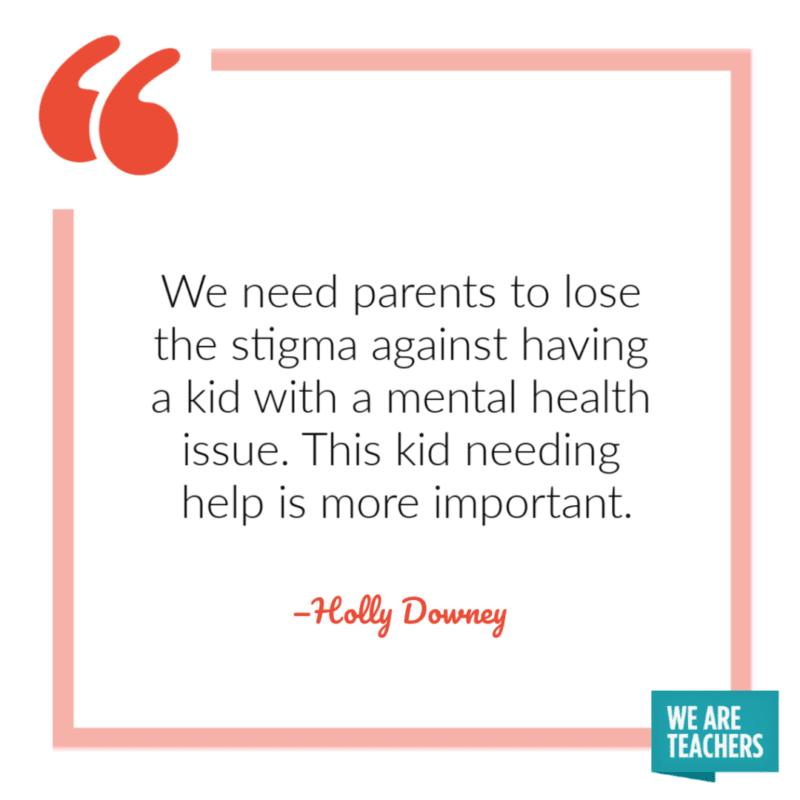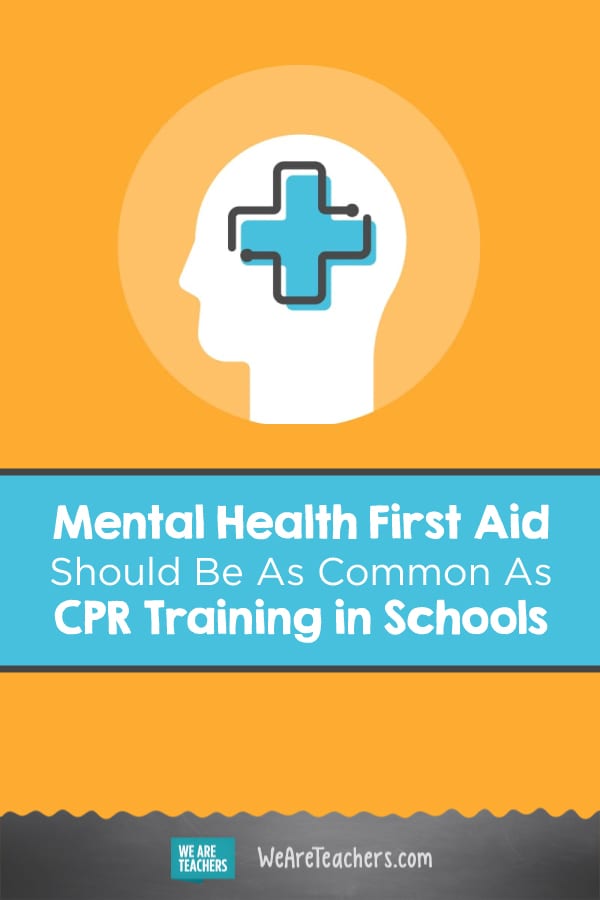When teacher Holly Downey was in high school, she remembers being lonely, anxious, and irritable. She needed help but didn’t quite know how to get it. Mental health first aid was not something that really existed at the time.
“I dealt with the death of my father in high school in some not so good ways,” she says. “At the time, I had no adults to talk to, but the signs were all there. I wish one of my teachers had recognized what I was going through.”
Teachers have an incredible opportunity to help students.

Holly doesn’t blame her teachers. After all, she gets it. Education is a demanding job, and teachers have to wear a lot of hats. But the experience has made her look at her role in the classroom in a different way. She’s currently a high school teacher at a charter school in Philadelphia, and she knows her students have daily challenges and struggles. No one really knows what they might be going through personally.
A few years ago Holly learned about mental-health first-aid training for educators, and she knew she wanted to learn more. Her hometown of Philadelphia has actually been a leader insupporting mental health first aid, offering free classes to the public. So she and a couple of other teacher friends signed up.
[contextly_auto_sidebar]
“It really opened my eyes to some of my students’ behaviors,” Holly says. “Just taking those two extra seconds to think about what may have happened in kids’ past that makes them think or behave a certain way can make all the difference in the world.”
She says the mental-health first-aid training has helped her recognize when a student might be in crisis or need and what she can do to help them get resources and support. She’d like to see all teachers go through similar training.
So many students could use an advocate.

An estimated 10 million students need help with a mental health condition, according to thisarticle highlighting the mental health crisis in schools. By the way, that’s just for kids ages 13–18. This means about one out of every five kids needs help. Yet, a large fraction of kids are not receiving the support they need.
The NCBH has training for both adults and youth, and they are actively trying to spread the word to teachers about the program and get more educators trained.
According to their website for the mental-health first-aid youth training, some of the topics covered include anxiety, depression, substance use, disorders in which psychosis may occur, disruptive behavior disorders (including AD/HD), and eating disorders. The training program gives a five-step action plan for how to help young people in both crisis and non-crisis situations.
Let’s help set our youth up for success.

Teachers already have so much that they take on, but Holly believes this training could really be a game changer in building positive relationships with students and setting them up for long-term success. She says it could also help pave the way for making mental health more common and talked about, both at school and at home.
“We need parents to lose the stigma against having a kid with a mental health issue,” she says. “I’ve seen or heard of too many kids who ask for help, but the parents won’t agree to it. They think it reflects on them as a parent. I want them to know it doesn’t! But this kid needing help is more important anyway!”
Some of the ways teachers can help get rid of the stigma is just being aware of it. For instance, understanding test anxiety and how it can impact students can go a long way in the classroom.
Holly tries to create a culture in her classroom where talking about mental health is common, and she lets students know that they can have an open dialogue with her. She also works to stock her classroom library, including books centered on kids of different races and cultures and characters who are addressing their mental health. (Check out the article on 50 picture book for social-emotional learning if you’re looking for suggestions.)
To learn more about mental health first aid and how to take a class, check out this website. Holly hopes many others take the eight-hour class because it can really help create a warm and welcoming environment for students.
“It’s important for students to understand their feelings are normal,” she says. “You just have to develop the skills you need to cope.”
Have you been through mental health training? Come share in our WeAreTeachers HELPLINE group on Facebook.
Plus, check out our article on test anxiety and how it impacts both teachers and students.


